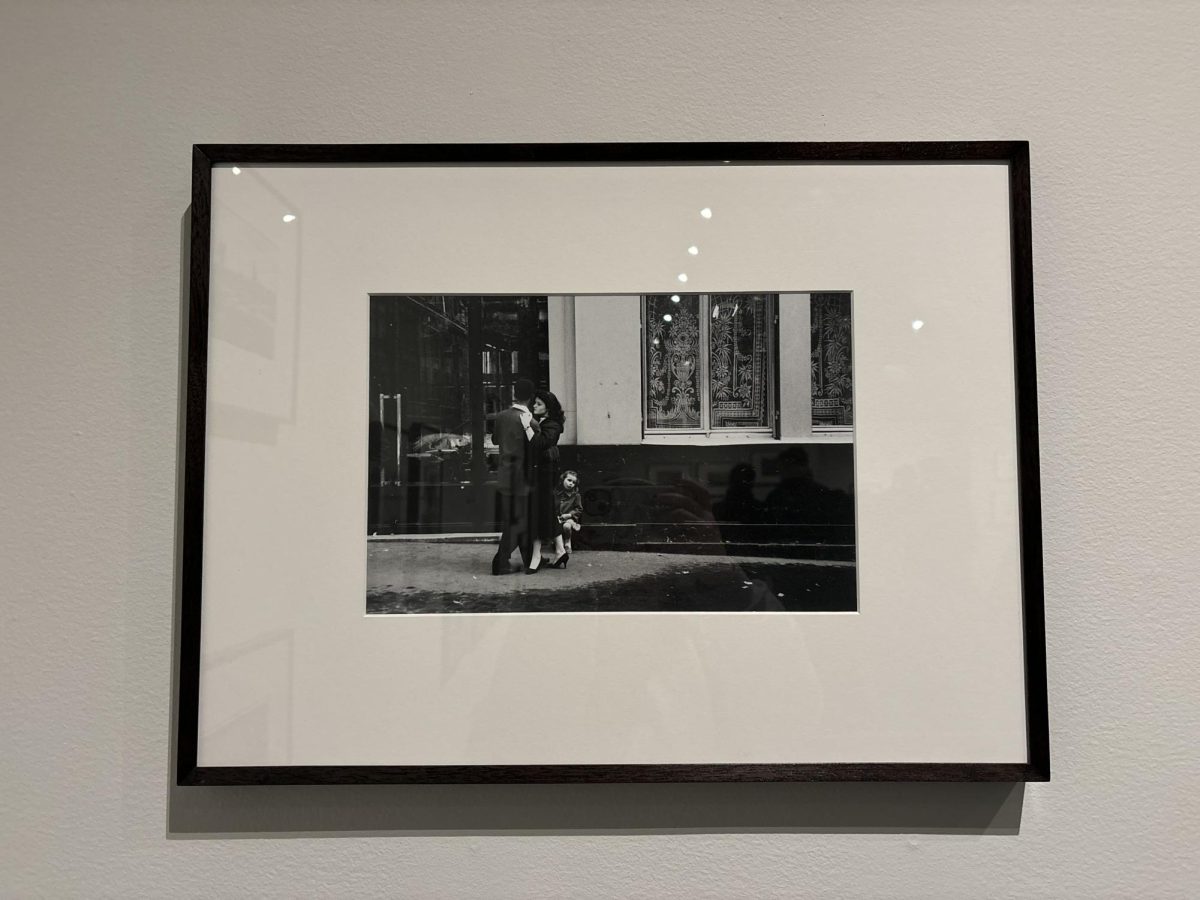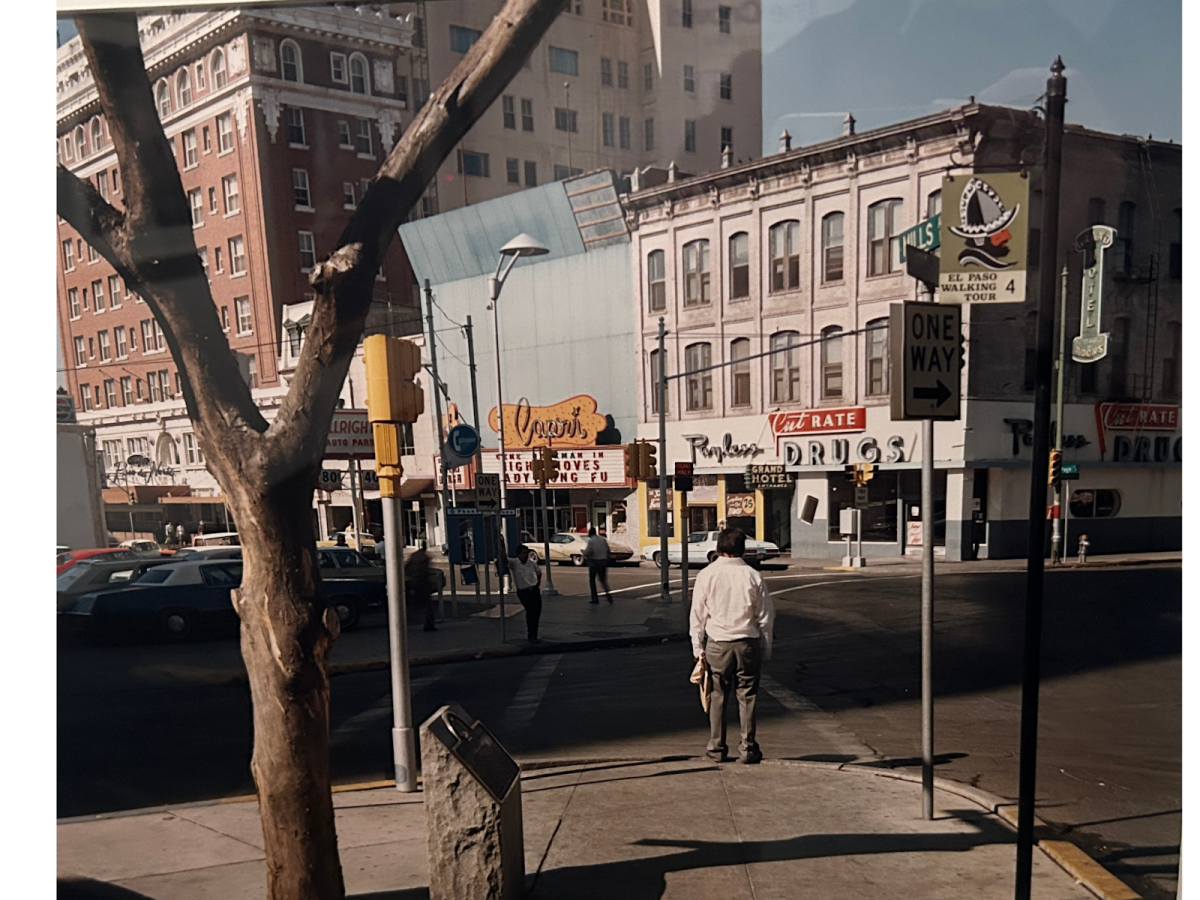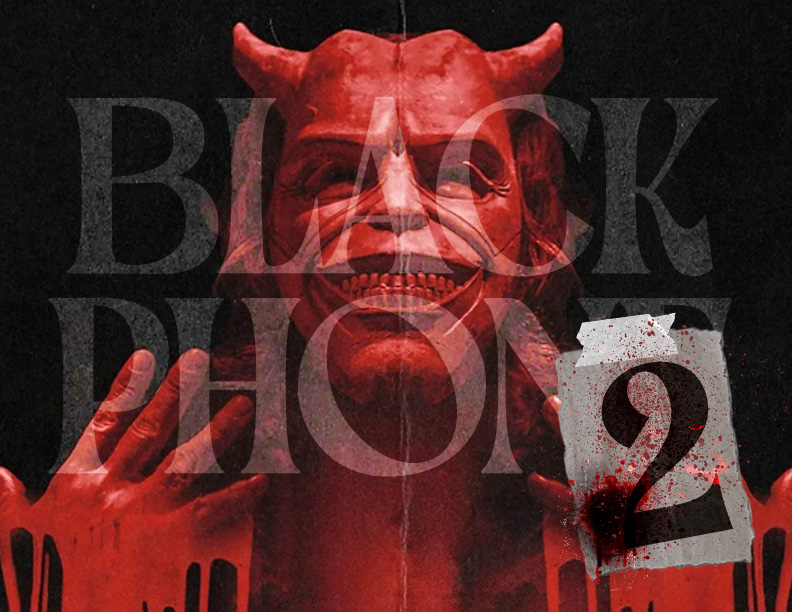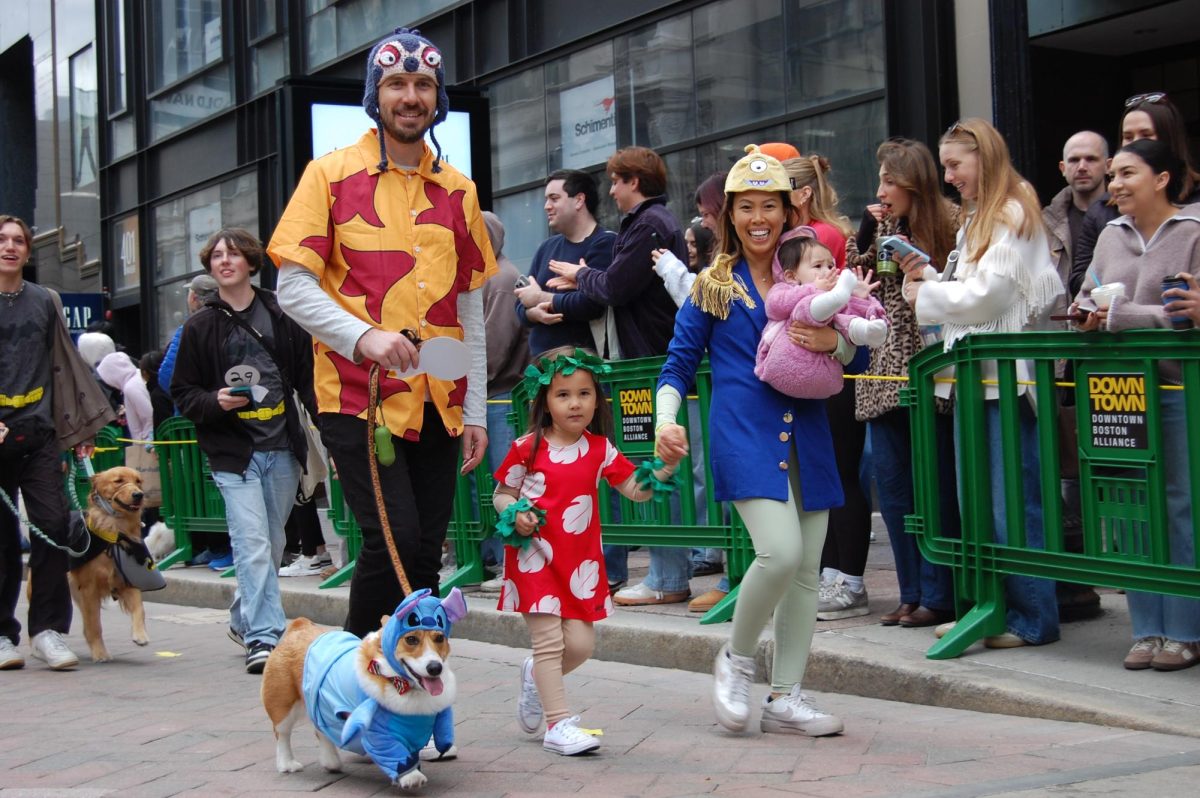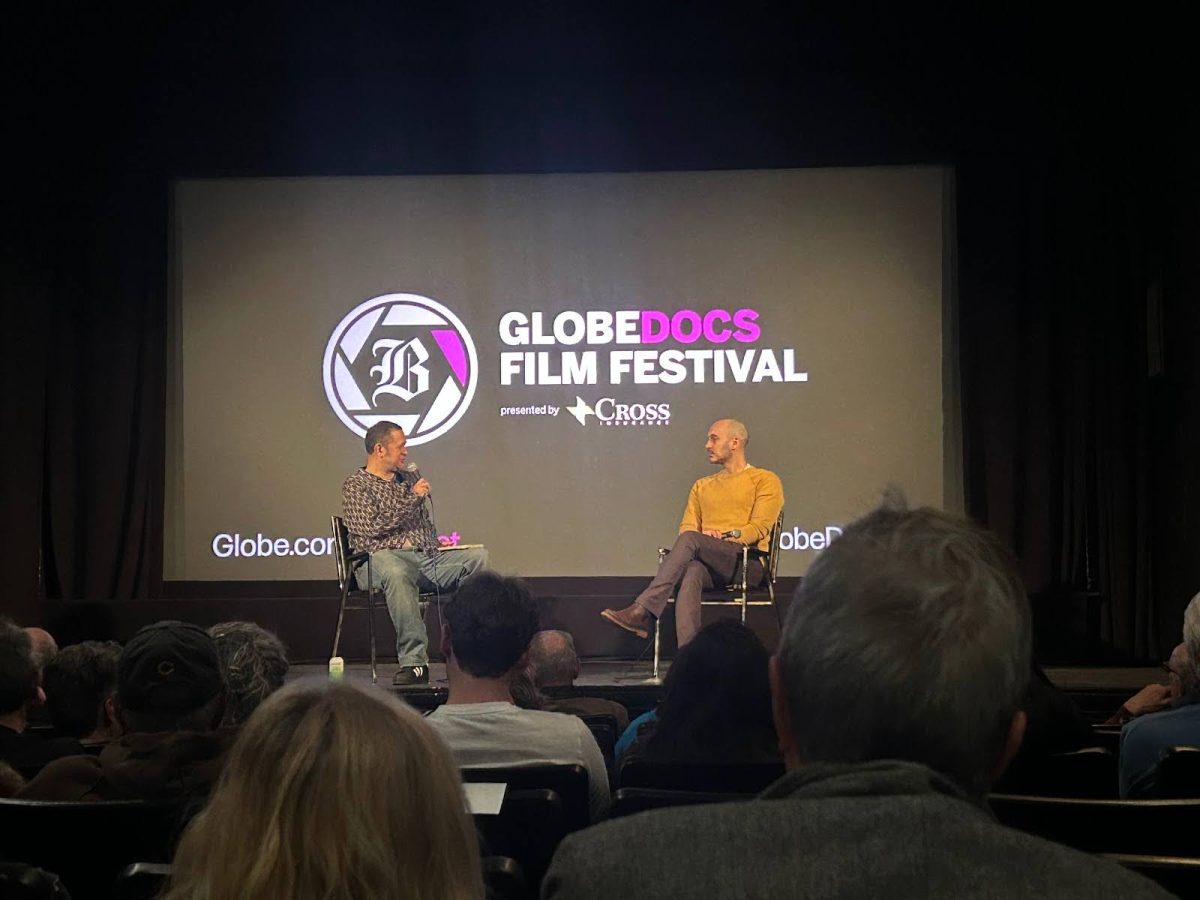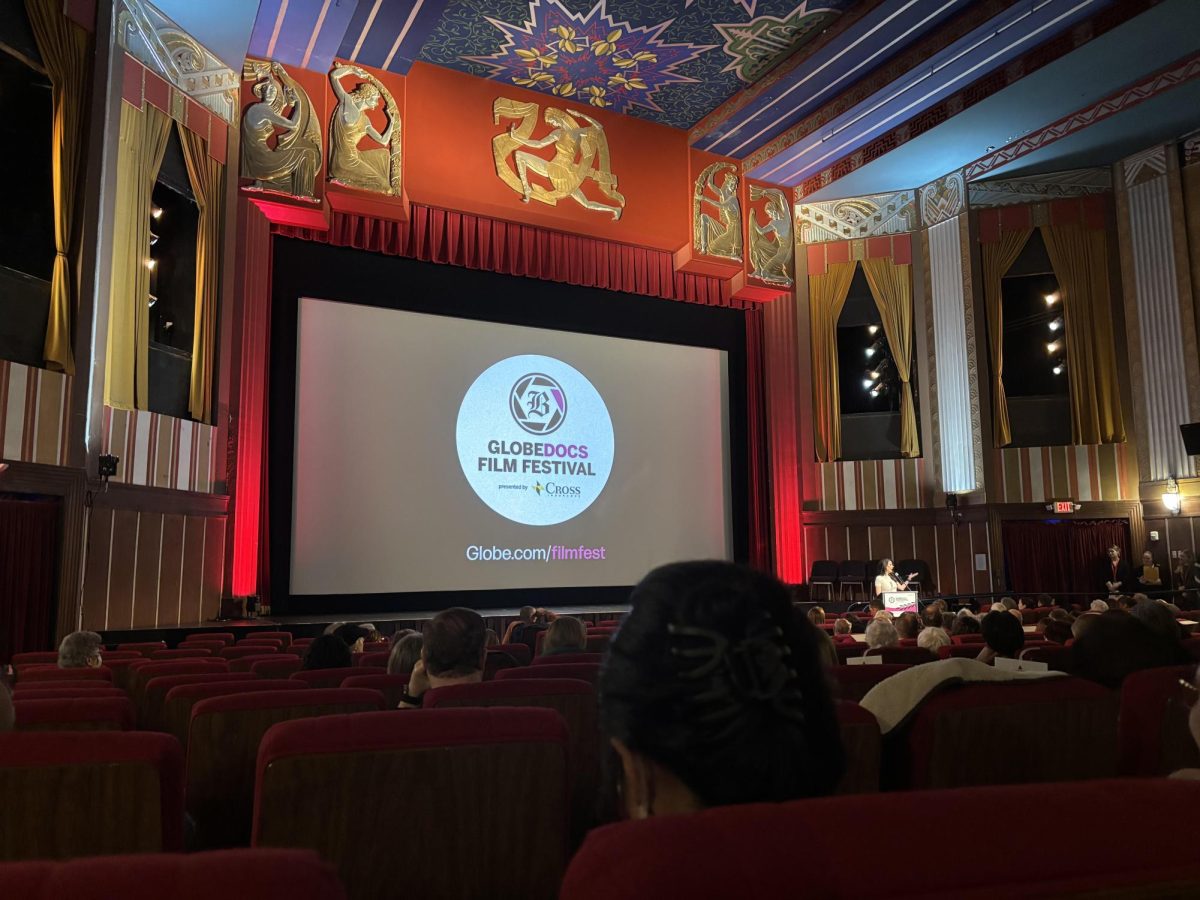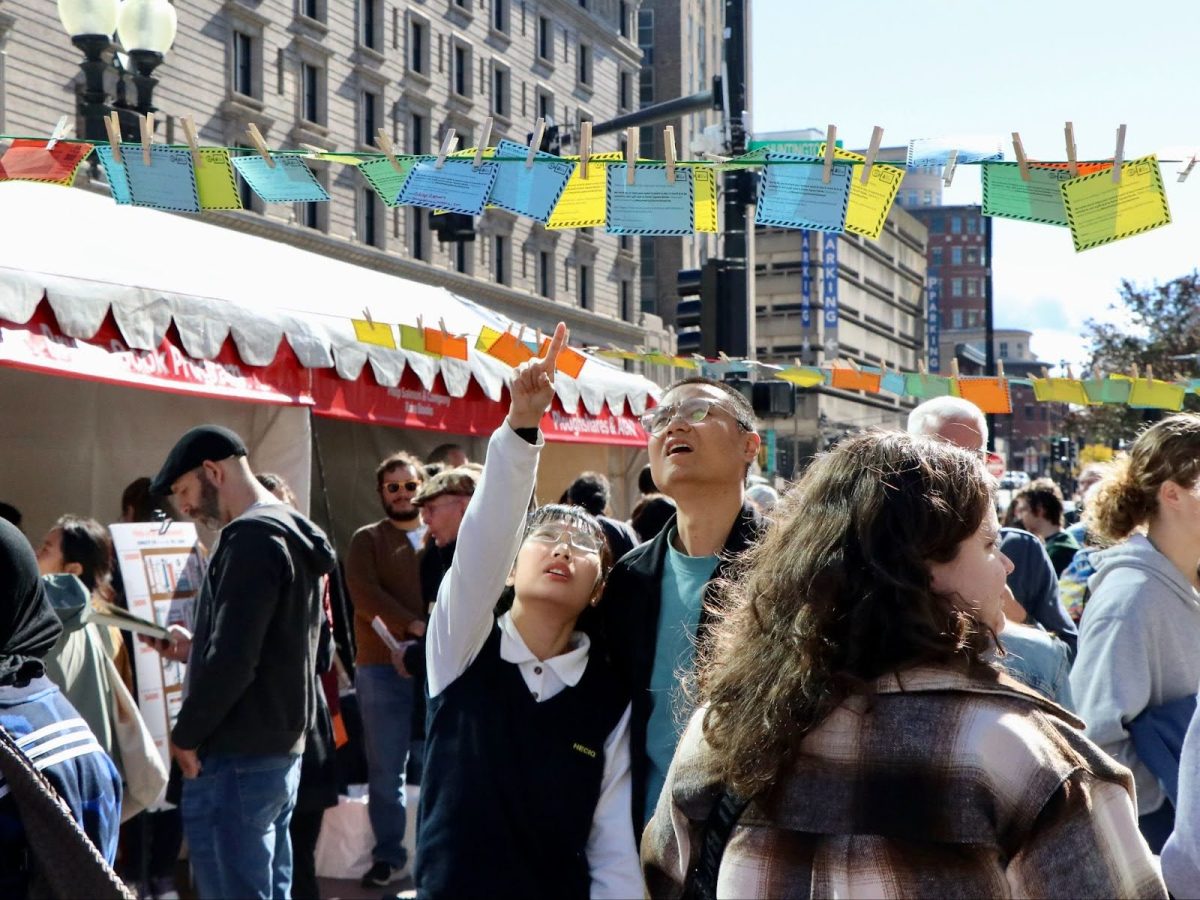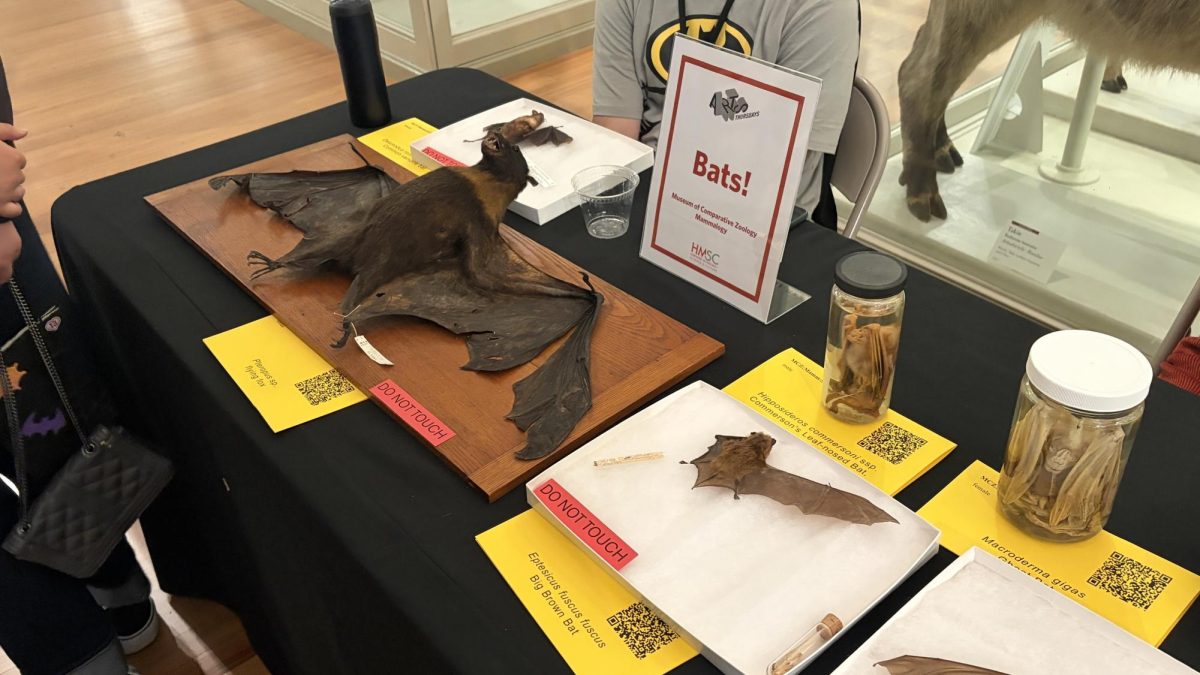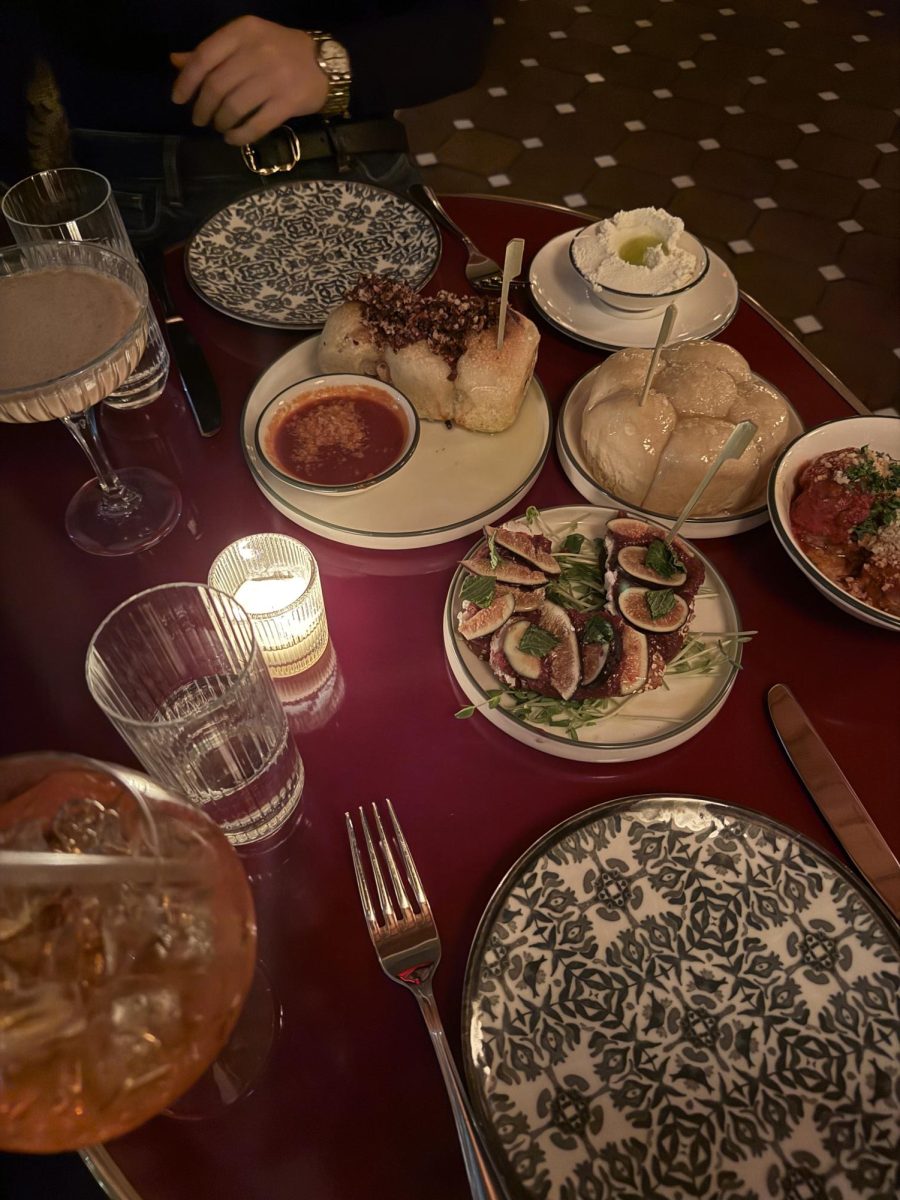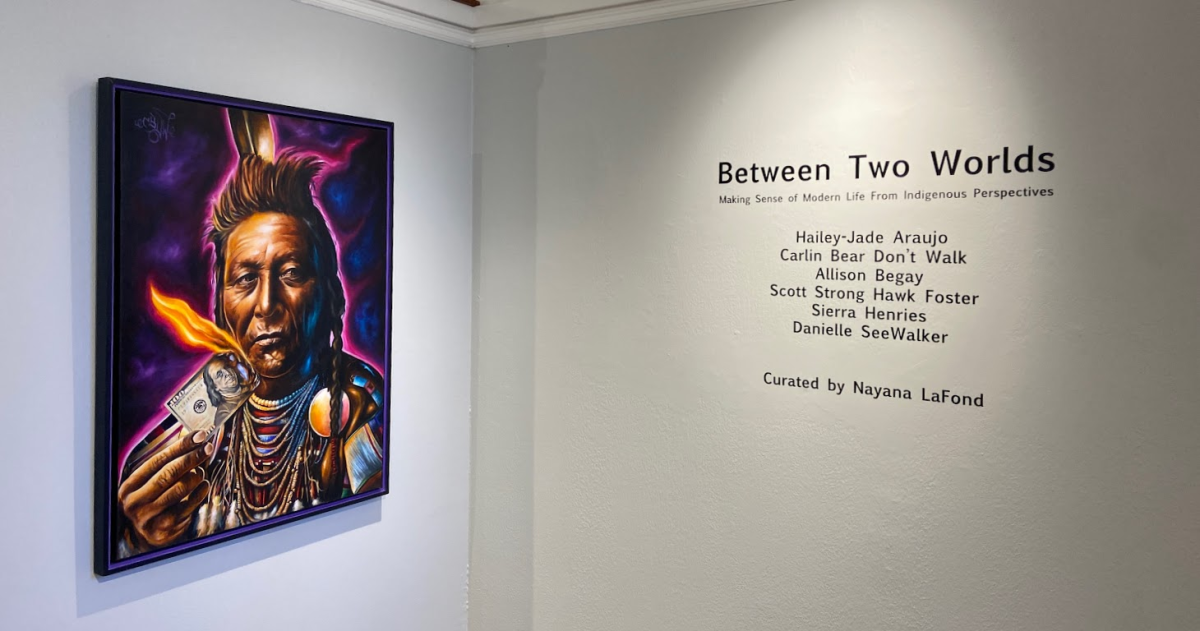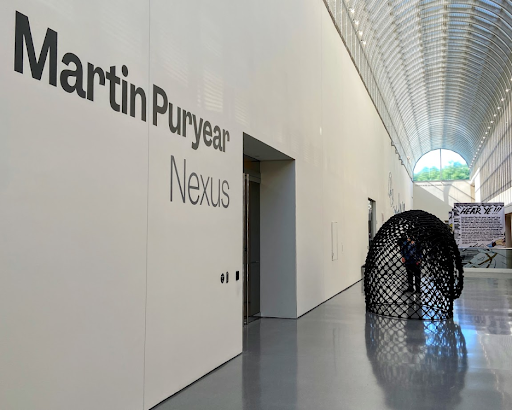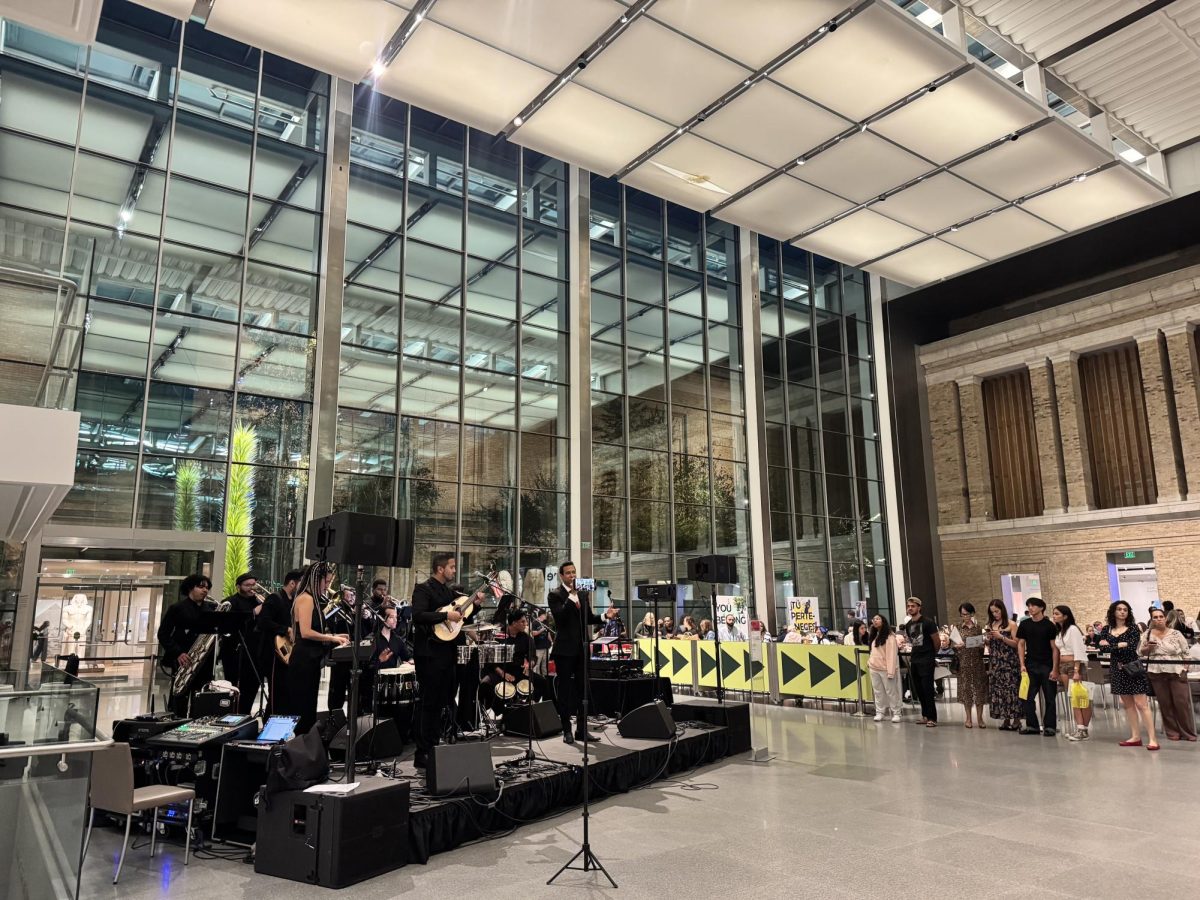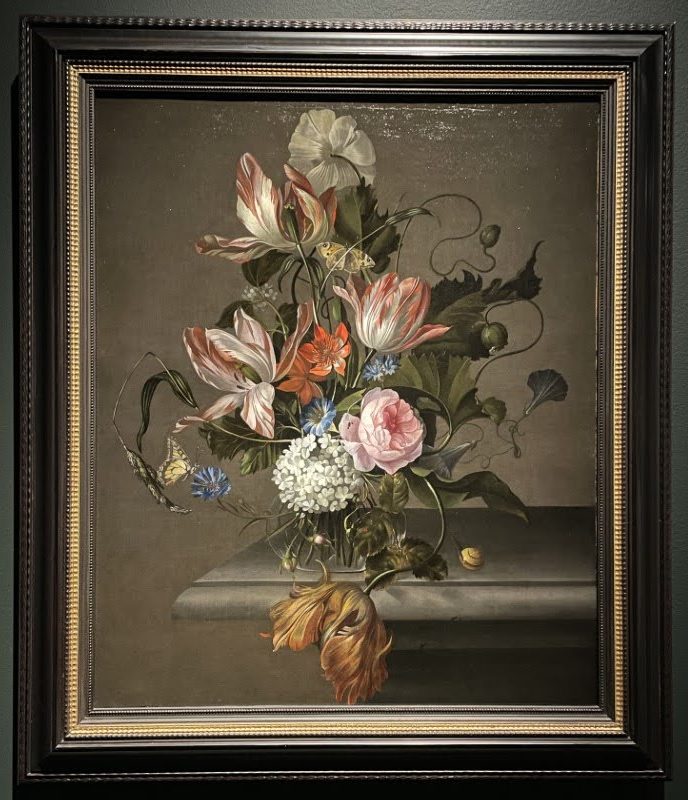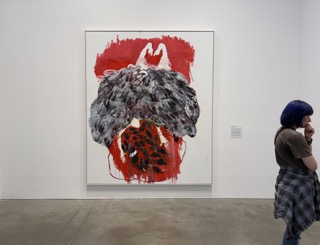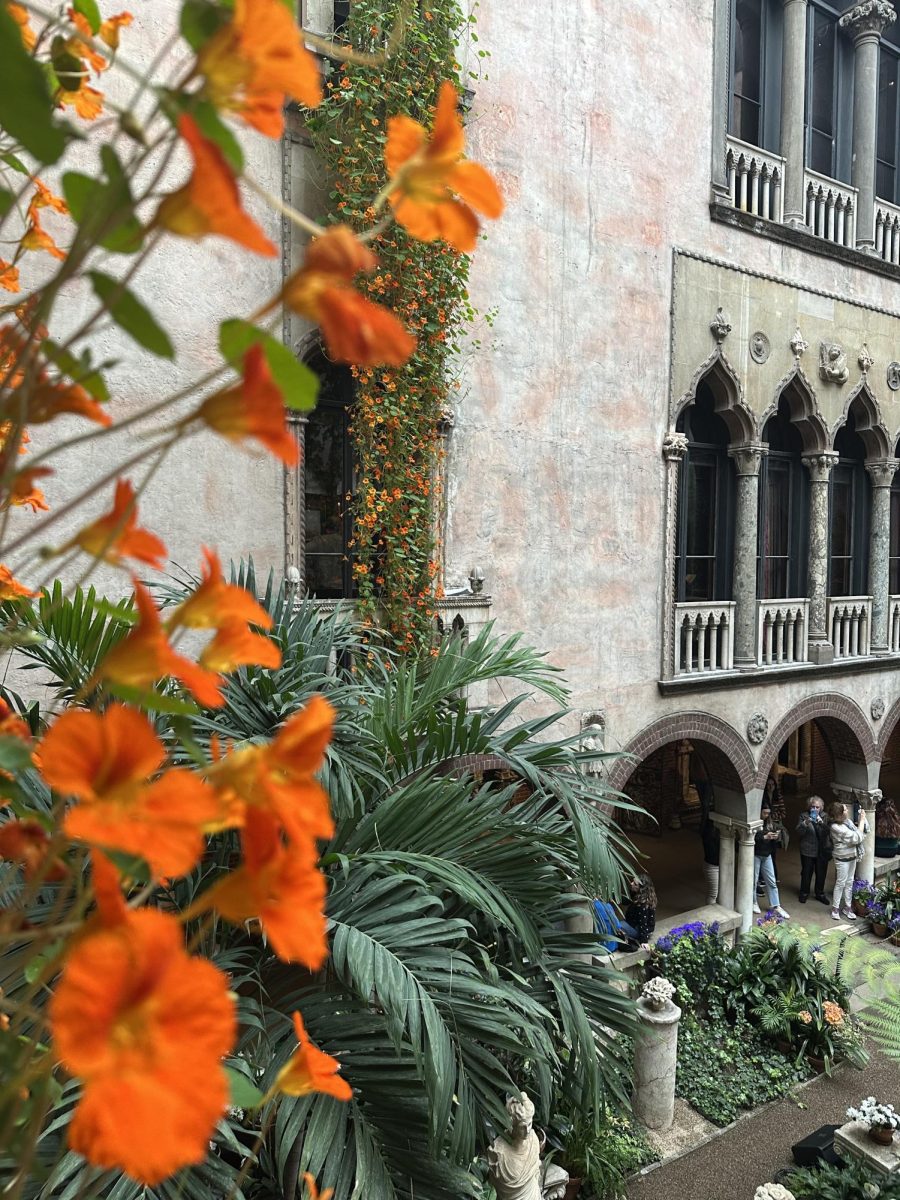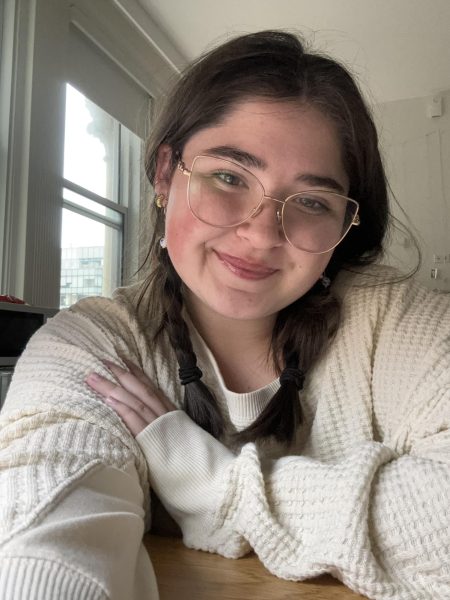The MFA’s new exhibit, “Robert Frank: Mary’s Book,” displays for the first time a scrapbook Robert Frank made for his future first wife, Mary Lockspeiser. After two years in New York, the Swiss photographer returned to Europe—Paris, France. In the city of love with his trusty camera, Frank was dedicated to sharing what he saw of Paris with his lover waiting for him back in New York.
Lovingly titled, “Mary’s Book,” it is a collection of black and white photos alongside short notes and anecdotes Frank had written. In its totality, it’s a collection of six pages, front and back. These original pages are displayed in the middle of the exhibit, curving around each other like they would have when Frank mailed them back to Lockspeiser.
Along the four walls of the exhibit are enlarged versions of the photographs Frank had taken. Many of them lack specific focus but rather take a closer look at the soft underbelly of Paris. He was devoted to capturing empty chairs, street corners and your everyday florals.
Rarely did Frank capture people within the frame of his lens, and on the occasion that he did, these were undeniably people in love. Couples roaming the streets of Paris, couples embracing in a dance-like way in Parisian allies or couples holding hands as they abandon chairs.
Despite his best efforts, Frank couldn’t seem to avoid those iconic, tourist hotspots that Paris is known for; Frank took an avant-garde approach to the subject at hand. Instead of just a photo of the Eiffel Tower, he found an enamored couple and left the iron giant hidden in a foggy and distant background.
Chairs were something that enamored Frank nearly as much as Lockspeiser, this much is evident from the repeated appearance of them within the six pages. Particularly, of the solitary variety. He was taken with these seats, which often littered the Parisian streets.
“You see them a bit all over Paris—the chairs—when they are alone they seem sad,” wrote Frank, next to his myriad of photos with chairs as the focal point. “Certainly after the rain. So it seems to me that they are waiting. Or, they are patient. And when one is alone, one sits down. On a chair that is next to another. Now, all three are waiting. It’s sad.”
To add to the romance of it all, Frank also photographed the flora of France. Flowers sold from suitcases, flowers bundled together and ready to be taken to a lover and even flower shop signs. This felt like Frank’s way of sending flowers to his beloved, the best he could do at such a far distance. Surely, he saw these blooming tulips and budding roses and thought of Lockspeiser. He may have wanted to give them to her, but with an ocean between them, his options were diminished to photographs.
Though, in a way, these are almost more idyllic; unlike with real budding tulips or blooming roses, these photos would never wilt. The photographs have stood the test of time, something that always brings forth the end of your typical flowers. Instead, these picturesque petals will remain pristine much longer than any flowers Frank could have given Lockspeiser.
This is a perfectly short and sweet exhibit with February just beginning to flourish, as Frank toys extensively with the romanticism hidden behind street corners or underneath the cushions of cafe chairs. It is a display of romantic gestures, of love that knows no distance and of finding the majestic in the mundane. It is a must-see for couples and lonely chairs alike.


